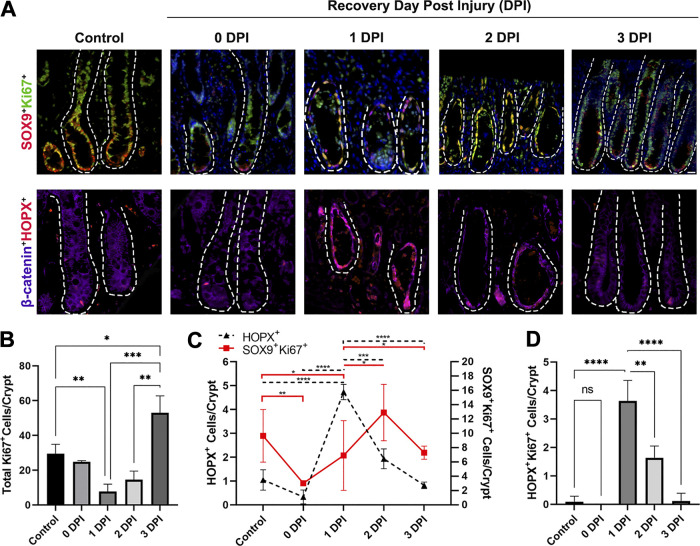Figure 2.
After severe ischemic injury, HOPX+ cell numbers are initially enriched and begin to decrease as active intestinal epithelial stem cells (ISCs) recover and proliferate. A: immunofluorescent images of aISC (SOX9+Ki67+, yellow) and rISC (HOPX+, red) cells after severe ischemic injury and during recovery. Epithelium marked by B-catenin (purple). Nuclei were stained with bisbenzimide H 33258 (blue). Dotted line outlines crypts extending down to the muscularis mucosa. Scale bar 20 µm. B: total number of proliferating cells (Ki67+) decrease after ischemic injury and subsequent tissue reperfusion and begin to recover between 1 and 3 DPI. C: total number of active and reserve ISCs postinjury demonstrate that HOPX+ rISCs are injury resistant and numbers are enriched after injury, whereas SOX9+Ki67+ aISCs are lost and recover between 1 and 2 DPI. D: HOPX+ rISCs also colocalize with Ki67 at 1 and 2 DPI. Values are means ± SD. Analysis by two-way ANOVA with post hoc Tukey’s test, *P < 0.05 **P < 0.01 ***P < 0.001 ****P < 0.0001, n = 3–5 pigs per recovery time point, 10 crypts were counted per animal per time point.

